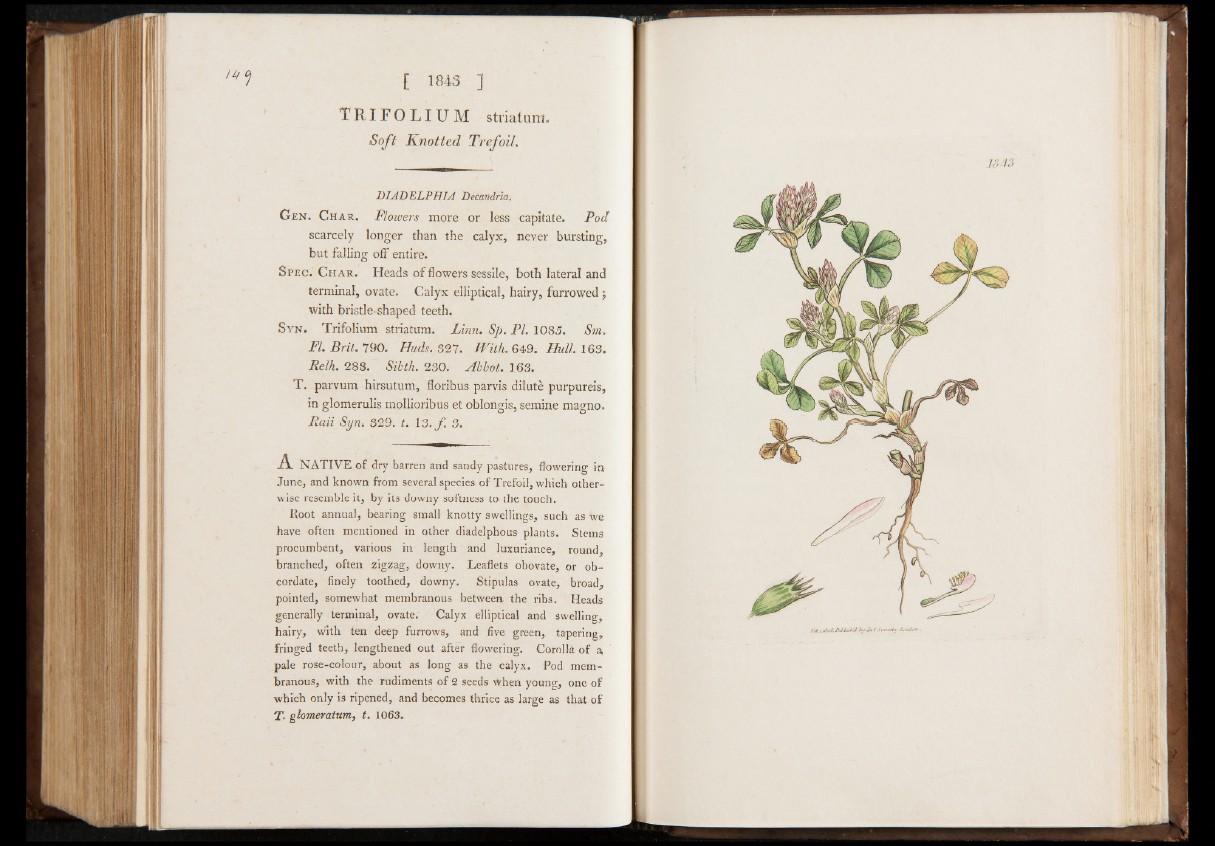
[ 1843 ]
TRIFOLIUM striatum.
S o ft K n o tte d Trefoil.
m ° ]
DIADELPHTA Decandria.
G en. C har. Flowers more or less capitate. Pod
scarcely longer than the calyx, never bursting,
but falling off entire.
Spec. Char. Heads of flowers sessile, both lateral and
terminal, ovate. Calyx elliptical, hairy, furrowed ;
with bristle-shaped teeth.
Syn. Trifolium striatum. Linn. Sp. PI. 1085. Sm.
FI. Brit. 790. Huds. 327. With. 649. Hull. 163.
Belli. 288. Sibtk. 230. Abbot. 163.
T . parvum hirsutum, floribus parvis dilute purpureis,
in glomerulis mollioribus et oblongis, semine magno.
Raii Syn. 329. t. 1 3 . f . 3 .
.A. NATIVE of dry barren and sandy pastures, flowering in
June, and known from several species of Trefoil, which otherwise
resemble it, by its downy softness to the touch.
Root annual, bearing small knotty swellings, such as we
have often mentioned in other diadelphous plants. Stems
procumbent, various in length and luxuriance, round,
branched, often zigzag, downy. Leaflets obovate, or ob-
cordate, finely toothed, downy. Stipulas ovate, broad,
pointed, somewhat membranous between the ribs. Heads
generally terminal, ovate. Calyx elliptical and swelling,
hairy, with ten deep furrows, and five green, tapering,
fringed teeth, lengthened out after flowering. Corolla of a
pale rose-colour, about as long as the calyx. Pod membranous,
with the rudiments of 2 seeds when young, one of
which only is ripened, and becomes thrice as large as that of
T. glomeratnm, t. 1063.